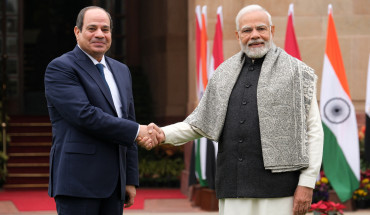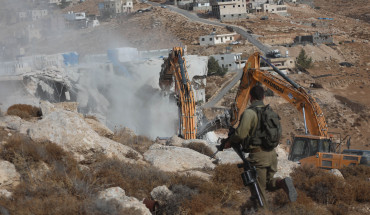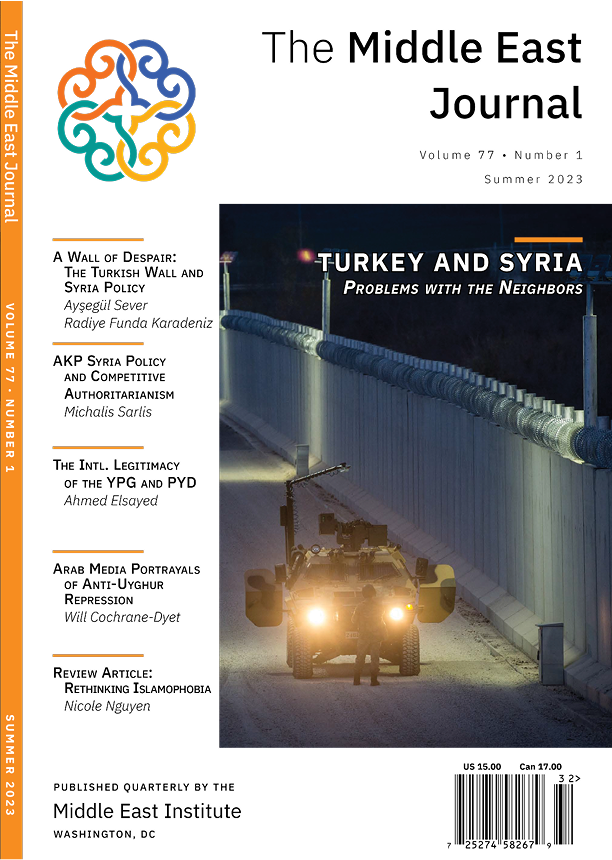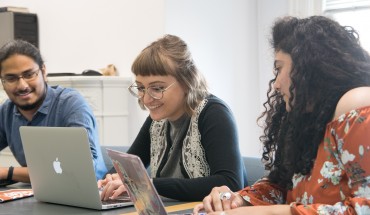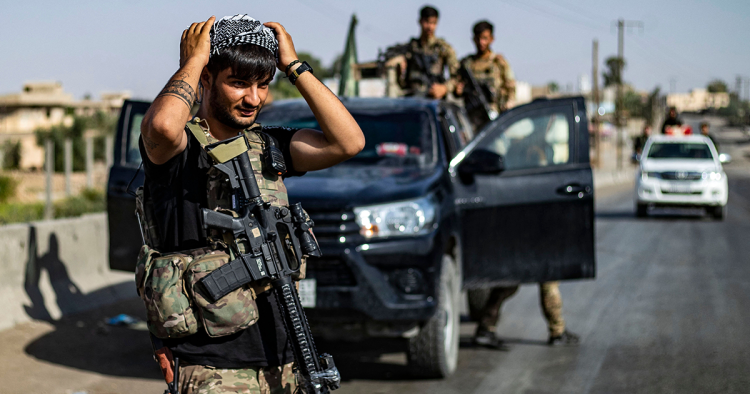On Sept. 8, the Kurdish-led Syrian Democratic Forces (SDF), a key U.S. ally, announced the end of its “Operation Security Enhancement” in Deir ez-Zor in northeast Syria. While framed as an operation targeting ISIS sleeper cells and criminals, it aimed at quashing an armed uprising led by Arab tribesmen, particularly members of the Akidat tribe. Clashes first erupted following the SDF’s arrest of Ahmed al-Khubayl (“Abu Khawla”), the commander of the Deir ez-Zor Military Council, on Aug. 27 and were led mainly by his close allies and fellow tribesmen. The rebellion grew in the following days as other tribes joined in, including those that had poor relations with Abu Khawla and had pushed for his removal for years. While multiple factors may have contributed to fueling the uprising, the importance of the region’s longstanding grievances cannot be overstated.
Precarious present
Although the SDF has re-asserted military control in Deir ez-Zor, the crisis is by no means over. There is likely to be continued fallout and for now stabilization seems like a distant goal. The operation, which claimed the lives of at least 69 people, has further divided an already fragmented tribal society and fostered deeper grievances and hatred against the Kurdish-led authorities by affected tribes and communities. All of these signs point to a fragile situation conducive to increased hit-and-run operations by tribal fighters with small arms. Cells associated with ISIS, the Assad regime, or Iranian militias looking to exploit the situation are also likely to carry out violent attacks. Nawaf al-Bashir, a pro-regime commander from the Baggara tribe, recently announced the establishment of a new tribal militia in the government-held part of Deir ez-Zor that will fight the SDF. Prior to this announcement, Bashir also sent a video message to Arab tribes urging them to confront the SDF. Meanwhile, messages calling for armed resistance and hit-and-run operations are circulating widely on social media. One post reviewed by the author reads: “We will not surrender. One bullet can turn an SDF oil tanker into a flame.”
The SDF/PYD’s ineffective talks and cosmetic measures
To help contain the situation, local sources reported that the general commander of the SDF, Mazloum Abdi, visited Deir ez-Zor on Sept. 12 to hold a series of meetings with civil society officials, local leaders, and tribal figures. Attendees reportedly spoke openly about the region’s grievances. These include the monopolization of power by kadros (party cadres, who are mostly Kurdish and belong to the inner circle of the Democratic Union Party, or PYD), corruption and limited transparency, lack of essential services and economic opportunities amid the diversion of the region’s oil resources, and controversial policies like forced conscription, mandatory sponsorship cards for internally displaced persons and visitors, and the adoption of an ideologically driven, PYD-inspired educational curriculum. All of these issues were aggravated by a prevailing sense of deprivation compared to other regions in northeast Syria, particularly Kurdish-populated ones.
The role of kadros, which are central to Kurdish management of the region, was reportedly one of the main issues during the discussions. In addition to high-level kadros, junior kadros are embedded across all governance and service bodies, creating a shadow structure where most decisions are made. In his response, Abdi promised to replace these non-local and foreign kadros (mostly from Turkey and Iran) with locals. However, localization has been tried in the region over the past several years and proved to be cosmetic and ineffective. Local kadros were selected on the basis of their loyalty and required to take intense courses to align their ideology with that of the PYD. They remained subordinate to Kurdish kadros and needed their approval to make decisions. Not only did localization not shift power away from the Kurdish kadros, but it also slowed down the process of making governance decisions.
There are several issues that cast doubt on how effective Abdi’s meetings with locals will be in terms of bringing about reforms and enhancing stability. The above grievances aired in talks with Abdi are not new; they have been central to formal and informal discussions for years, including externally organized mediation tracks held with the Syrian Democratic Council, the PYD, and the SDF. Most of these issues were also among the main drivers and slogans of anti-SDF protests. Instead of undertaking serious measures to address them, the Kurdish authorities and their kadros have often resorted to cosmetic measures and a mix of schemes to buy loyalty and crackdowns on critics and protesters to maintain the status quo. According to sources who attended the recent meetings, Abdi’s response to most of the above issues was vague and he could not provide timelines for any reforms.
Another issue undermining Abdi’s recent meetings with locals is that most of the tribal figures who are usually invited to these sorts of meetings were elevated by the SDF and are not seen as true representatives of their tribes or communities. As one local source put it, “It is like the SDF negotiating with itself.” Talks with these figures are thus unlikely to do much to ease tensions. Although Abdi publicly called Sheikh Ibrahim al-Hilf, the acting head of the Akidat tribe and a leader of the uprising, for negotiations, Akidat leaders are unlikely to hold direct talks with the SDF at this stage unless they are facilitated through the coalition and include guarantees.
At this point the leaders of the Akidat tribe seem determined to demand that the U.S. and the coalition work toward an autonomous Arab administration independent of the Kurds. Such a request has ethnic, ideological, political, and economic dimensions to it. Beside the massive differences between the culture advocated by the PYD and the region’s conservative norms, tribal figures are also upset about the Kurds’ diversion of the region’s oil resources to possibly enrich the Kurdistan Workers’ Party (PKK) and their willingness to reconcile and cooperate with the Assad regime.
Toward a sustainable solution
Arab demands for autonomous management of the region seems unrealistic at the moment due to capacity limitations, tribal divisions, and the U.S.’s prioritization of the partnership with the Kurds to ensure ISIS’s enduring defeat. The U.S. realizes that achieving this security objective requires stability and regional support. However, a sustainable solution in which the ruling authorities enjoy legitimacy and ensure stability cannot be achieved without addressing the above grievances. The PYD’s past and current approach in the region suggests that these demands are unlikely to be met without credible external pressure. We are thus likely to see a new ineffective round of talks, followed by the implementation of cosmetic measures. Beyond Deir ez-Zor, previous efforts to get the PYD to accept compromises and share power were largely unsuccessful. In most cases, the PYD showed a tendency to use force to consolidate power. One example is the Kurdish-Kurdish reconciliation talks, with most rounds ending with the PYD’s crackdown on the offices of the Kurdish National Council.
In light of the above, it is vital for the U.S. and the coalition to take the crisis in Deir ez-Zor more seriously; they need to abandon their policy of limited engagement and pursue deeper involvement going forward. As a start, the U.S. and the coalition should hold serious talks with Akidat leaders, who can have a major influence on fellow tribal members currently inciting against the SDF. After quelling the tensions, the U.S. and the coalition should engage in much greater depth in the region’s administrative affairs to ensure that grievances are addressed rather than deferring to the Kurdish authorities and trusting that they will be responsive. In the medium to long term, the U.S. and the coalition should explore frameworks in which the Kurdish-led administration and Arab tribes could have a genuine partnership with external monitoring and supervision. While external monitoring may not resonate well with the push for greater localization, it is a must given the current dynamics. Above all, there is a need for clarity: Efforts to establish such a framework should avoid focusing on general principles and state clearly how the region will be governed and how resources will be distributed.
Decisionmakers should realize that taking a passive approach or continuing the current policy of limited engagement in Deir ez-Zor will likely lead to chaos and instability. Such conditions will only exacerbate humanitarian needs in a region that is already suffering from dire conditions and put significant policy objectives, like ensuring the enduring defeat of ISIS and countering Iranian influence, in jeopardy.
Amer Mohamad is a researcher and analyst focusing on the MENA region. His recent role was Research Lead at Integrity Global, where he focused Syria. You can follow him on X (Twitter) at @Amermoh89.
Photo by DELIL SOULEIMAN/AFP via Getty Images
The Middle East Institute (MEI) is an independent, non-partisan, non-for-profit, educational organization. It does not engage in advocacy and its scholars’ opinions are their own. MEI welcomes financial donations, but retains sole editorial control over its work and its publications reflect only the authors’ views. For a listing of MEI donors, please click here.






